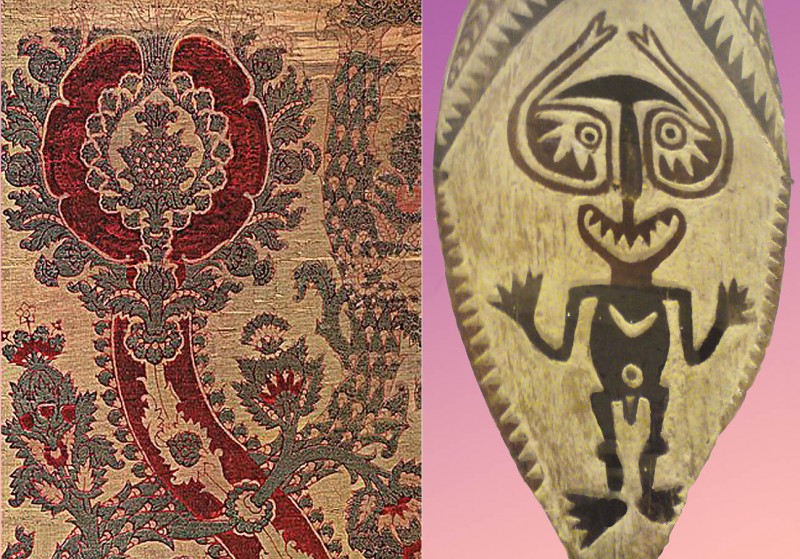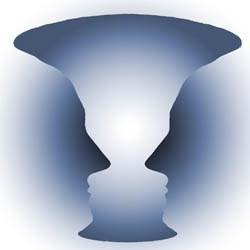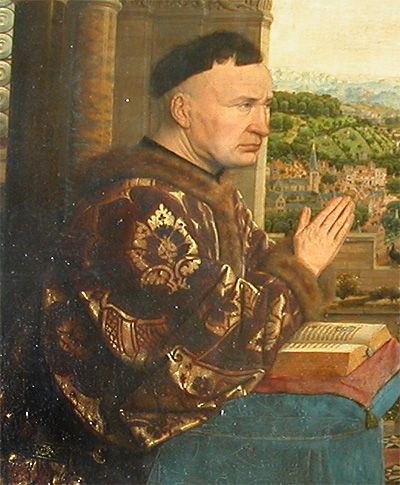It wouldn’t be easy to find two more different artefacts than these. On the left is a silk velvet embroidery made in Italy about five hundred and fifty years ago. On the right is a shield from Koave in Papua New Guinea, made in the last hundred years. Yet they both use exactly the same graphic device, a figure/ground effect.
The most famous demonstration of figure/ground reversal is the faces/vase illusion:
We can see this figure either as two faces, or as a vase. When we see it as a vase, we say that the vase is figure, and the faces become background, or ground. So when it flips and the faces appear as figure, the vase becomes ground. Another example of figure/ground flip is my recent post on the balustrade illusion.
Now check out the artworks at the top of this post again. In each case, the image as a whole doesn’t flip like the faces/vase illusion. Instead the overall design in each case is of a dark shape, plant form or figure, on a light background. But in each image a part of the design does flip over into light figure on dark ground. Look at the eyelashes of the figure on the shield, and then at his teeth, which can either be seen as light teeth on dark ground, or vice versa. In the silk velvet piece, the decoration running up the middle of the stalk and in the middle of the flowering form reverses in the same way.
Both these designs are associated with very special occasions. I reckon the figure/ground illusion effects were part of what qualified the designs for special use. The shield was made for an initiation ceremony, and the design is meant to be terrifying for small boys, if not so serious for adults. The silk velvet was a luxury textile in Renaissance Italy. These damask fabrics had such high status that we often find them hanging behind the Virgin Mary and Jesus in devotional paintings, or as the costume of the very highest status figures in paintings. Here’s an example, the robe of the Nicolas Rolin in what I reckon is one of the most beautiful pictures in the world, The Madonna with the Chancellor Rolin painted by Van Eyck about six hundred years ago. It’s in the Louvre, in Paris. (Forget the Mona Lisa – which you can’t see anyway. This incredible painting is just as wonderful and in a little room that’s often empty).
The effects in the shield and silk panel at the top of the post, and in the painting by Van Eyck, are all I reckon examples of the way that perceptual puzzles are often one component of aesthetic effects – see the posts I’ve put in a new category – illusions and aesthetics.




wicked man that is awsome dude